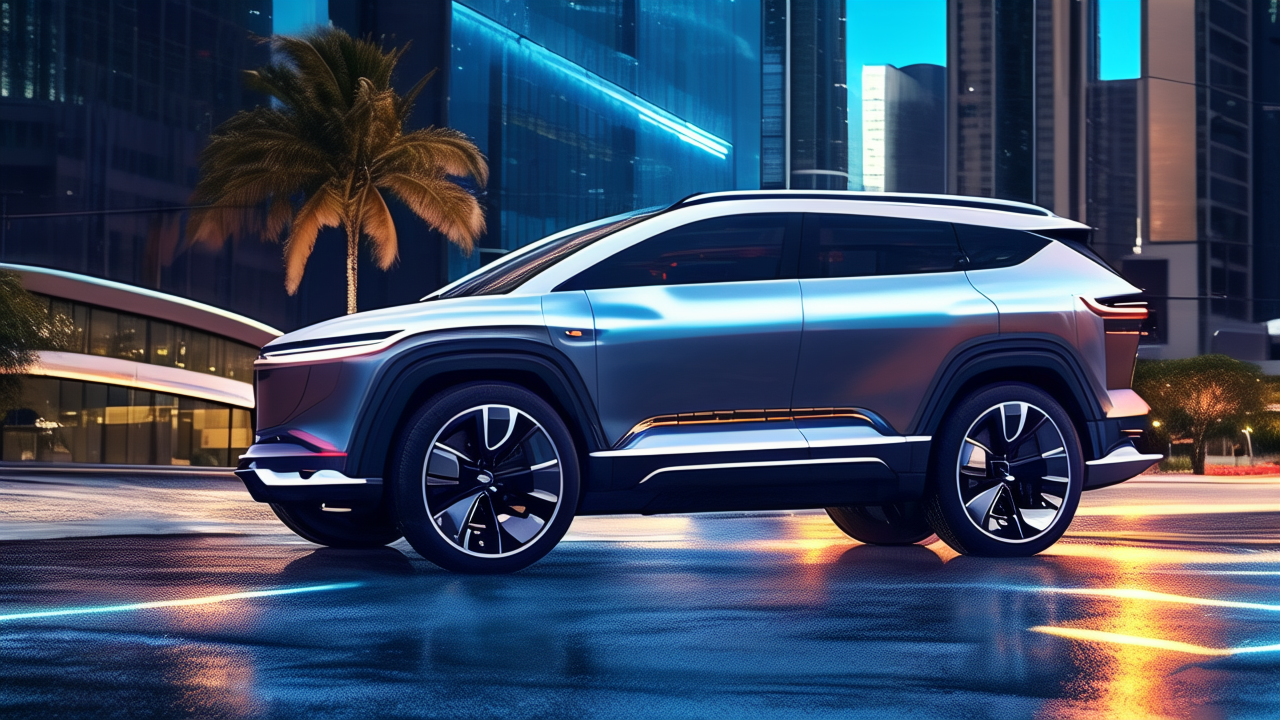
AI-generated image
AsianFin -- Renault’s China R&D team is forging ahead with an ambitious new project: developing a brand-new new energy vehicle based on Geely’s latest GEA platform. Unlike previous collaborations between the two automakers—which mostly involved Geely’s CMA platform—this marks a fresh chapter in their cooperation.
The all-new SUV is primarily aimed at fast-growing overseas markets including Southeast Asia, Central and South America, and North Africa, signaling Renault and Geely’s joint push beyond China’s crowded electric vehicle space.
After revamping its R&D operations in China with the creation of the Advanced China Development Center (ACDC) in Shanghai, Renault has been steadily increasing its local presence and capabilities. The company has already completed development of the Twingo E-Tech, an all-electric small vehicle tailored primarily for Europe, cutting vehicle development times from 3–4 years down to around 16–21 months.
The new SUV project builds on this success. It will come in both all-electric and plug-in hybrid versions. While Renault is responsible for the vehicle’s unique body design, the core chassis and architecture will borrow heavily from Geely’s Galaxy brand models built on the GEA platform. This hybrid approach is designed to reduce costs and compress the product development cycle—critical advantages in a fiercely competitive new energy vehicle (NEV) market.
Renault China CEO Su Weiming recently disclosed that ACDC has achieved around a 40% cost reduction for projects like the Twingo E-Tech and the next-generation Dacia electric vehicles. Beyond the new SUV co-developed with Geely, ACDC is also advancing several other projects, including small EVs on Renault’s AmpR Small platform. The AmpR Small platform targets city cars in the A0 to A segments, whereas the Geely collaboration aims to fill a product gap in larger NEVs tailored for Renault’s expanding overseas footprint.
Crucially, these new energy vehicles co-developed with Geely will not be sold in China, where Renault focuses on smaller electric models. Instead, they will primarily target markets where Renault already enjoys a strong brand presence and dealer network, such as South Korea, Southeast Asia, Central and South America, and North Africa. Geely, meanwhile, hopes to leverage Renault’s established distribution channels in these regions to accelerate its own international ambitions.
Geely’s GEA Platform: The Foundation for Overseas Growth
The GEA platform is Geely’s newest core architecture and underpins its Galaxy brand’s rapid growth. Models like the Galaxy A7, Xingyuan, and E5 have helped Galaxy become Geely’s fastest-growing brand, with sales jumping 237% year-on-year to over 643,000 units in the first seven months of 2025. However, these sales have been predominantly domestic.
Expanding overseas remains a key challenge for Geely and other Chinese NEV makers, due to trade barriers, limited brand recognition, and the difficulty of building dealer and service networks. To overcome this, Geely is pursuing deeper collaborations with multinational automakers that already have local manufacturing and sales footholds.
Earlier this year, Geely took a minority stake in Renault Brazil, aiming to sell its vehicles via Renault’s existing production and dealer network in South America. The overseas version of the Galaxy E5 is set to be the first Geely model produced and marketed under this partnership in Brazil.
For Geely, the alliance with Renault represents a strategic springboard into lucrative foreign markets, offering an alternative to building presence from scratch. For Renault, the collaboration injects fresh momentum and technology into its overseas operations, especially as it retools for the new energy transition.
The Renault-Geely partnership has been steadily expanding since 2021. In 2022, Renault’s South Korean plant began producing a hybrid version of the Koleos SUV based on Geely’s CMA platform, which officially launched in 2024.
The most significant step came in May 2024 with the launch of HORSE Powertrain Limited—a 50/50 joint venture between Renault and Geely focused on powertrain R&D and manufacturing. HORSE Powertrain covers everything from internal combustion engines to hybrid and electric drive systems. Renault transferred its global engine R&D teams and 17 powertrain plants into the JV, effectively outsourcing a core part of its powertrain business to Geely, which has backed the company with technology and financial resources.
HORSE Powertrain can produce up to 5 million units annually, serving major clients including Renault, Geely, Volvo, and Nissan. This scale helps both automakers share development costs and enhance competitiveness in an era demanding rapid electrification.
In July 2025, Renault appointed François Provost as CEO, who has deep experience in China and Asia-Pacific operations and played a key role in launching the HORSE JV. Under his leadership, the Renault-Geely alliance is set to deepen further as a pillar of Renault’s global new energy strategy.
A Model for Multinational-Chinese Cooperation
The new SUV project epitomizes a transformative model: using China not as a sales hub but as an R&D and supply chain center, while focusing manufacturing and sales overseas. This flips the decades-old joint venture approach that largely confined foreign automakers to the Chinese market.
By leveraging China’s abundant engineering talent and a mature NEV supply chain, Renault is slashing costs and accelerating time to market—critical to staying competitive in global electric vehicle markets. Meanwhile, Geely gains a trusted partner with local manufacturing infrastructure and dealer networks in key international markets.
Together, the two automakers are advancing a “win-win” formula to scale new energy vehicle production globally. Renault’s focus on small EVs for Europe complements the Geely co-developed SUV aimed at other growth regions, maximizing their combined reach.
The Renault-Geely collaboration offers a glimpse into the evolving landscape of the global auto industry, where partnerships between established multinationals and dynamic Chinese players are reshaping product development, manufacturing, and international expansion strategies.
As the new SUV nears production, both companies will be watching closely to see if their joint efforts can translate into market success across Southeast Asia, Latin America, and beyond—markets ripe for growth but fiercely competitive and complex.
For Renault, the stakes are high: establishing a competitive position in emerging markets is critical for its global turnaround. For Geely, the alliance is a cornerstone of its ambitions to become a major international NEV player.
The next few years will reveal whether this partnership model, built on shared platforms, joint R&D, and cross-border resource sharing, can become a blueprint for other automakers navigating the rapidly changing global EV landscape.







